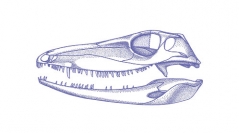

 Comptes Rendus Palevol
23 (5) - Pages 69-83
Comptes Rendus Palevol
23 (5) - Pages 69-83Reconstructions of extinct animals play an important role in vertebrate palaeontology. Such reconstructions represent visual hypotheses regarding the original morphology of the vertebrates they depict, which are amenable to future testing as additional information comes to light through discoveries of new specimens and re-examination of specimens that have already been collected. In this contribution, we argue that the scientific value of reconstructing a fossil vertebrate extends beyond simple presentation of a visual hypothesis, because the process of creating a reconstruction is itself analytical and hypothetico-deductive. Successive drafts of the reconstruction represent provisional visual hypotheses that can be tested on the basis of their internal consistency and their congruence with empirical evidence about the extinct taxon that is the reconstruction’s subject. Iterative refinement of the reconstruction over successive rounds of testing and modification is likely to lead to discoveries about the subject’s anatomy, as certain anatomical possibilities are rejected and others found to be plausible. These anatomical discoveries, here termed first-order inferences, may in turn lead to second-order inferences about functional morphology or other aspects of palaeobiology. Three case studies from dinosaur palaeontology, respectively involving the skull of the hadrosaurid Edmontosaurus Lambe, 1917, the forelimb of the ceratopsid Pachyrhinosaurus Sternberg, 1950, and the hindlimb of an indeterminate ceratopsid, are provided to illustrate how the process of reconstruction can be a fertile source of discoveries.
Reconstruction, visual hypothesis, illustration, Ceratopsidae, Hadrosauridae, orthographic rendering